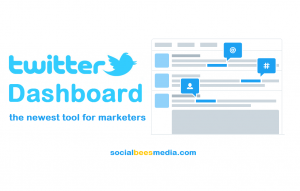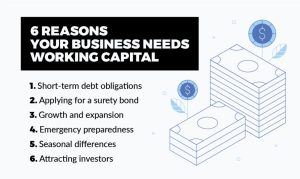Advertising Week wrapping up, and the regular calls for diversity, new ideas, creativity, and the need for riskier activities and tactics were not out of reach. Professionals pushing strategies like influencer marketing, and account-based marketing, were all around as well. We enjoy Advertising Week, for one thing, because it is a cool way for the industry to spend some time examining itself and see what is working well and what still needs to be done. It highlights the good, bad and straight up ugly.
The argument against Advertising Week would be the lackluster calls to action to fix the ‘ugly.’ There’s always room for progress.
Another reason we like Advertising Week is the amount of data and numbers that come out about ad spending in different areas, so we can see what’s trending, what’s falling, and what’s exploding.
The numbers that eMarketer shared with digital net revenues and spending are impressive. We want to share our top 5 digital marketing facts that eMarketer gathered, and some things marketers should think about when deciding on future strategy and campaigns.
- Digital ad spending on Video to top $ 10 Billion dollars
Whoa. We all knew and saw the power of video, especially when brands were aptly able to determine which campaigns demanded short form or long form, but the speed of spending on video was surprising. The spend on video ads on mobile and tablet nearly doubled from 2015 to 2o16, and on desktop it grew 21% on that same timeline.
Considerations: Sometimes we professionals like to buck the trends and criticize those marketing professionals chasing after “shiny objects,” the latest and greatest in terms of marketing.Do not underestimate the power of video. The more efficient we are in helping the customer visualize using our brand, the better.
- No Significant Data on IoT and Connected Technology
One thing we were hoping to see is how spending would be affected when the consumer completely connects themselves. What are the implications? Are notifications turned off, are readily accepted? Are consumers truly experiencing a world where they are constantly interacting with brands online and off? As of now, we haven’t seen, heard, or read anything truly moving.
Considerations: Still seems too early to add numbers and revenue to IoT in terms of marketing return on investment. But once numbers start coming in, there will be a lot of interested people wanting to know.
- Programmatic Ad Spending is Still a Thing, and it’s not going away
One of the more divisive issues in the advertising community, in our opinion, is the use of programmatic advertising. As advertisers and marketers stumbled backwards into this technology, consumers pushed back hard and the market powers gave way to things like AdBlock and its equally annoying counterparts.Hopefully our community is getting better at it, because the numbers indicate the spending in this arena is only going to grow. How much, you ask? eMarketer says that the year of 2016 shows programmatic ad spending reaching over $ 25 billion dollars- a 44% increase over 2015.
Considerations: As an industry, AdLand has to get better at targeting the right audiences. It has to get better giving those audiences the right message. If not, then spending will continue to grow, and effectiveness/ROI will remain either stagnant or decline. The report by eMarketer said that marketers are “getting more comfortable” with the technology. Unfortunately, getting comfortable with the technology doesn’t mean getting better. We’re comfortable playing tennis- doesn’t mean we’re good at it.
- Social Media Continues to Mature
And by mature, we mean that those free networks are finally learning how to offer advertising platforms and make actual money. Twitter, LinkedIn, Facebook and Snapchat are all predicted to grow by leaps and bounds in the mobile ad spending space.
Considerations: Though your brand doesn’t need to be on every single network, you should seriously consider (if not already) dedicating resources to make sure your presence is robust in whichever network you choose. Again, it’s the not-so-simple philosophy of being where your audience is.
- Digital Market Continues to Fragment
More than several marketing professionals and observers have covered the fragmentation of the digital world- people enjoy finding content and information that reinforces their views, likes, hobbies and interests. The way consumers consume information is no different- once having a positive experience, they will continue with it.And we are beginning to see that. With more players in the digital space, and with social media getting the hang of delivering content, we are beginning to see shifts in behavior. Google has a few chinks in its armor, with Facebook and Twitter picking up market share in digital ad revenue. Pandora and LinkedIn are sneaking up there as well.
Considerations: Though are there a few “best practices” in the digital spending space, there is more area to be creative than ever before. The amount of niches in the digital world is incredible. If you want to cast a big net, do you go to an ocean, or a pond? Similarly, if you want to get a specific audience, are you going to spend it on Google, or a community site where you know that audience hangs out?
Not hard questions to answer. We just need to make sure we, as professionals, take a step back and make time to ask those questions.
The digital space is definitely exciting, and open to all types of exploration, experimentation and creativity. The numbers are telling that we do need to make sure our brands are taking advantage of the tools out there. However we need to make sure we adopt the right strategies not just for the brand, but for the consumers we serve.
Digital & Social Articles on Business 2 Community(16)





